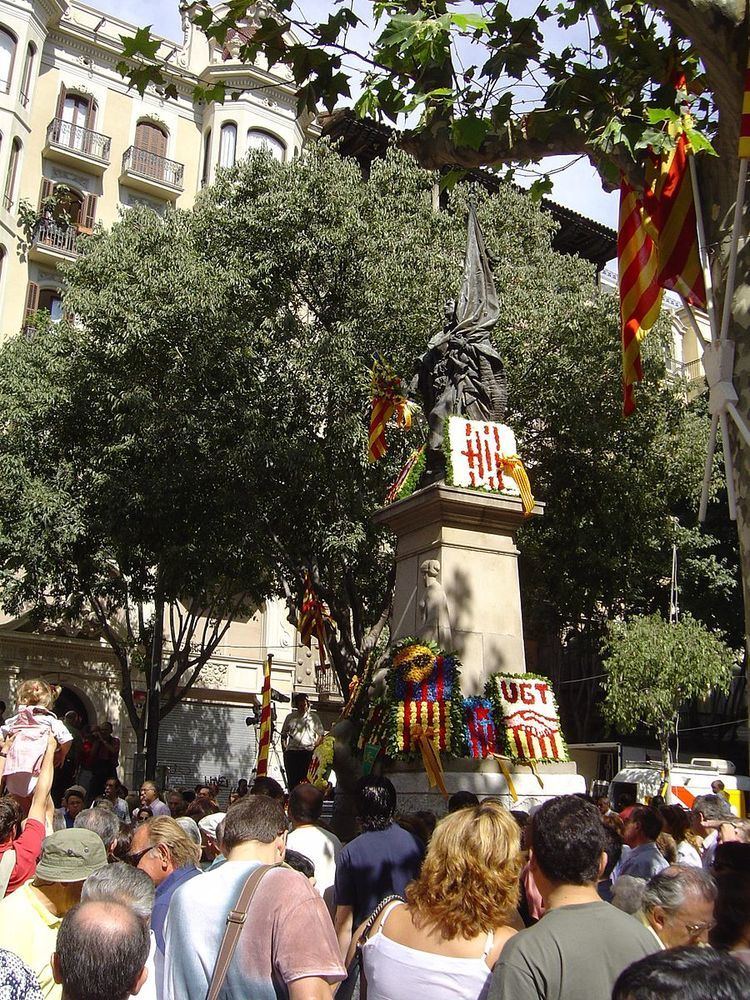Date 11 September | ||
 | ||
Also called Diada, Onze de Setembre Significance Commemorates the fall of Barcelona during the War of the Spanish Succession in 1714 and the subsequent lost of Catalan liberties, institutions and laws. Next time 11 September 2017 (2017-09-11) | ||
The National Day of Catalonia (Catalan: Diada Nacional de Catalunya [diˈaðə nəsiuˈnaɫ də kətəˈɫuɲə]) is a day-long festival in Catalonia and one of its official national symbols. It commemorates the fall of Barcelona during the War of the Spanish Succession. The Catalan troops that initially fought in support of the Habsburg dynasty's claim to the Spanish throne were finally defeated at the Siege of Barcelona by the army of the Bourbon king Philip V of Spain on 11 September 1714 after 14 months of siege. That meant the loss of the Catalan constitutions under the aegis of the Nueva Planta decrees. The holiday was first celebrated on 11 September 1886, was suppressed by the Franco dictatorship in 1939 and reinstated in 1980 by the autonomous government of Catalonia, the Generalitat de Catalunya, upon its restoration after the Franco dictatorship.
Nationalist organizations and political parties traditionally lay floral offerings at monuments of those who led the defence of the city such as Rafael Casanova and General Moragues, marking their stand against the king Philip V of Spain. Typically, Catalan nationalists organize demonstrations and meet at the Fossar de les Moreres in Barcelona, where they pay homage to the defenders of city who died during the siege and were buried there. Throughout the day, there are patriotic demonstrations and cultural events in many Catalan villages and many citizens wave senyeres and estelades.
